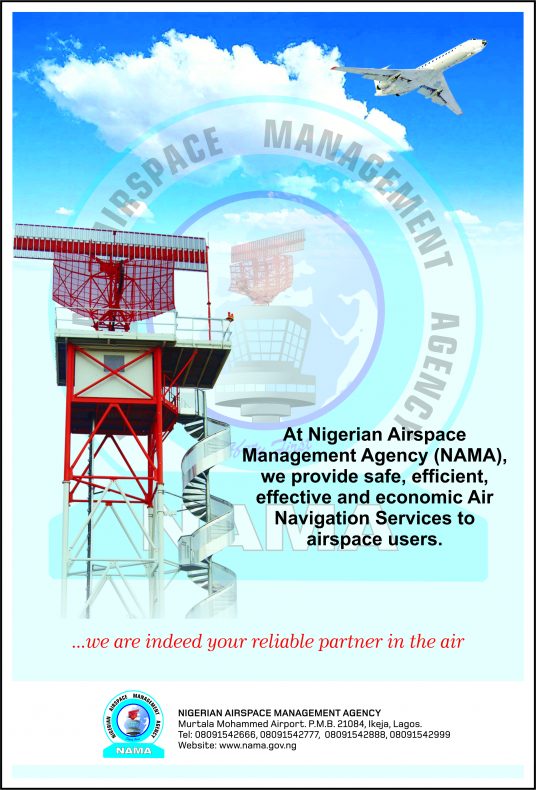With these five strategic financial options, Nigeria’s aviation industry has a clear financial runway for expansion, innovation, and sustainability, provided stakeholders act with foresight, structure, and adaptability.
BY ANTHONY OMOH
Amid the pressing need for resilience and sustainability in Nigeria’s aviation sector, expert financial analyst Mary Olowo-Sokeye has identified five strategic financial options that can help airlines unlock capital, manage operational risks, and thrive in a volatile economic climate.
Among the five strategic financial options discussed were Equity Financing, Debt Financing, and support from Export Credit Agencies, each offering tailored solutions to improve liquidity, reduce exposure, and ensure long-term viability.
Olowo-Sokeye, the Chief Financial Officer, InterGuide Group represented the President of Sabre West and Central Africa, Dr. Gabriel Olowo at the 29th Annual Conference of the League of Airport and Aviation Correspondents (LAAC).
Delivering a presentation titled “Financing Options for a Sustainable Aviation Future”, she urged operators to break away from outdated funding models and adopt innovative approaches to financial structuring.
“Aircraft are not cheap. Neither is their maintenance, or the innovation needed to run them,” she told aviation stakeholders.
“To fund aviation sustainably, we must review our financial health, understand market conditions, and explore creative funding mechanisms.”
Below are the five strategic financial options she outlined, each offering distinct pathways to growth and long-term stability.
Equity Financing – Opening Up Ownership for Growth
Olowo-Sokeye emphasized equity financing as a viable option for airlines looking to expand their networks or diversify operations. This model involves raising capital by offering ownership shares to investors.
“Equity financing is ideal for expansion,” she explained. “It lets you bring in strategic partners and raise long-term funds without increasing debt obligations.”
Startups and smaller carriers with limited borrowing capacity can particularly benefit from this structure, which avoids interest burden while strengthening shareholder value.
Debt Financing – Using Institutional Loans for Fleet and Operations
While traditional, debt financing remains essential for major capital investments like aircraft purchases. Airlines can take out corporate or institutional loans often secured with collateral to fund operations or expand fleet size.
“With aircraft loans, you enjoy benefits like tax deductions, flexible payment structures, and depreciation,” Olowo-Sokeye said.
“But you must have strong liquidity and a healthy cash flow to manage repayments.”
She warned that airlines pursuing this route must maintain financial discipline and have contingency plans for currency fluctuations and interest rate volatility.
Sale and Leaseback – Unlocking Liquidity While Retaining Operational Control
A more flexible model gaining traction is the sale and leaseback arrangement. This involves an airline selling an owned aircraft to a third party and leasing it back to maintain operational control while freeing up cash.
“A sale-leaseback unlocks liquidity, allows flexible financial planning, and offloads asset management burdens,” she said. “However, lease payments can be steep, and you lose long-term asset value.”
These strategic financial options are increasingly popular among Nigerian operators looking to optimise cash flow while keeping aircraft in service.
Export Credit Agency (ECA) Financing – Government-Backed Leverage
Olowo-Sokeye identified export credit-backed financing as an underutilised but high-potential option for Nigeria. It involves securing international loans at lower interest rates, backed by government credit guarantees.
“This funding type offers lower interest rates and better terms for acquiring new aircraft,” she explained. “The Nigerian government can play a vital role by backing the creditworthiness of airlines.”
While these strategic financial options offer affordable financing, it is complex and requires collaboration with foreign export credit agencies and rigorous documentation processes.
If successfully implemented, this strategic financing option could have transformative effects.
Aircraft Leasing – Flexible Access Through Wet, Dry, and Hybrid Leases
Leasing remains a practical solution for airlines seeking access to modern aircraft without bearing the full ownership cost.
As major traditional strategic financial options, Olowo-Sokeye outlined three main leasing structures:
-
Wet Lease – Aircraft, crew, maintenance, and insurance provided by lessor
-
Dry Lease – Only the aircraft is provided; airline handles the rest
-
Hybrid Lease – A mix of both, tailored to operational needs
“Leasing provides flexibility and allows you to refresh your fleet regularly,” she said. “But you become heavily dependent on the lessor’s compliance and foreign exchange exposure.”
Leasing also helps airlines avoid heavy capital expenditure upfront but limits long-term control over the assets.
A Call for Financial Innovation and Long-Term Planning
Olowo-Sokeye concluded her presentation by urging airlines to rethink their financing strategies in the face of inflation, fuel price volatility, and naira devaluation.
“Sustainable financing in aviation isn’t just about raising funds. It’s about ensuring long-term viability while navigating macroeconomic headwinds,” she said. “These options give us that roadmap.”
She called on industry leaders to embrace risk-adjusted financial models and urged regulators to support broader access to international financial instruments and credit guarantees.
Summary: 5 strategic financial options for Aviation Financing
Option |
Key Benefit |
Main Risk/Challenge |
Equity Financing |
Raise funds without debt |
Dilution of ownership |
Debt Financing |
Tax deductions, structured repayments |
Requires strong liquidity and collateral |
Sale and Leaseback |
Unlocks liquidity, retains operations |
High lease costs, loss of asset value |
ECA Financing |
Low-interest loans with government support |
Complex approval process, foreign involvement |
Aircraft Leasing |
Flexible access, lower upfront costs |
Forex risks, reliance on lessor compliance |























